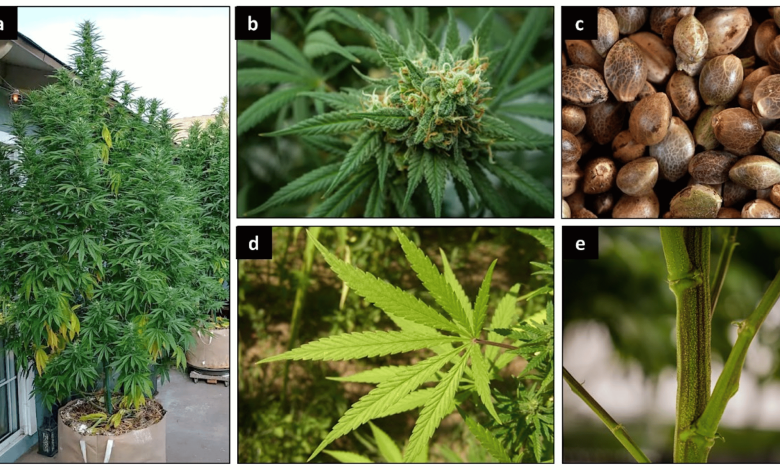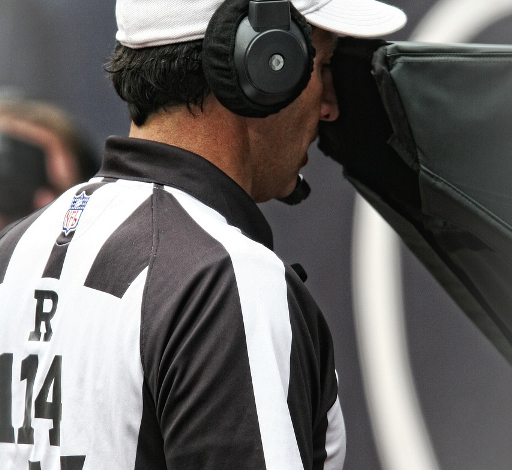
COMB in football refers to that stat tracks the total tackles (both solo and assisted) by a defensive player. Watching a bone-crunching hit and wondering who gets credit? COMB has the answer. It combines those individual efforts with team pursuit to showcase the full picture of a defender’s tackling production.
In the hard-hitting world of football, COMB is the stat that separates the true playmakers from the pack. It spotlights which defenders are living in the opposition’s backfield and separating receivers from the rock. Whether celebrating an outside linebacker’s individual brilliance or lauding total team pursuit, COMB leaves no doubt about who stuffed that run.
Understanding COMB in Football
Anybody watching football knows the feeling. A big hit lays out the ball carrier, the crowd goes wild, and you just witnessed a bone-crunching tackle. But who gets the credit? And how do teams evaluate those defensive heroes stuffing the run or separating receivers from the ball?
That’s where COMB comes in – the stat that captures every pitched battle in the trenches. This hard-hitting metric leaves no doubt about which defenders are bringing the wood.
Visit this website: worlddesignimpact.org
The Components of COMB
Solo Tackles
A solo tackle is a thing of brutal beauty – one playerSquaring up and smothering the ball carrier all by themselves. These aren’t just heat-seeking missiles hunting down prey. It takes remarkable instincts, athleticism, and technique to be a revolution stopper.
Envision that linebacker knifing through traffic to blast the running back behind the line. Or the safety coming up to dereconstruct a receiver fighting for extra yards. That’s the essence of a solo tackle – an individual effort of supreme will.
Assisted Tackles
Then you have the art of the group tackle. When multiple hitters converge to halt forward progress, it’s time for some rated-R violence. Pursuit from all angles, a pile of bodies, and one poor soul trapped in the…well, you get the picture.
Don’t snooze on these assisted tackles, though. They showcase discipline and gang tackling at its finest. Every defender keeping eyes on the target, filling running lanes, and ensuring the cavalry has arrived for the big hit. It’s maximum effort toward the common goal of shutting down the play.
Evaluating Players Using COMB
Okay, so we’ve established solo efforts equal individual awesomeness while group tackles mean swarming like ants at a picnic. But coaches couldn’t care less about aesthetics – they just want dudes making plays. That’s where COMB shines.
Add up those solo and assisted tackles into one combined figure, and you get the full scope of a defender’s tackle totals. No getting lost in the weeds of subcategories at the expense of the bottom line.
An outside linebacker disruptive as an individual AND always hustling in to finish off plays? That dude’s gonna post some silly COMB numbers.
A safety rarely racking up solos (hey, not everyone’s a heavyweight) but constantly cleaning up the trash with hustle and heady play? His COMB totals will still spotlight the impact he brings.
This complete picture of tackling production is precisely what evaluators crave. After all, don’t they always preach “doing your job”? COMB brings those words to life on the stat sheet.
Importance of COMB in Football

Tackling the gritty lifeblood of a stout defense, COMB serves multiple crucial purposes:
- Identifying the Playmakers Whether it’s recognizing the clear-cut studs or unearthing those unsung heroes, COMB shines a spotlight on the tone-setters. You know, the ones living in opponent’s backfields or separating receivers from the rock. Teams lean on these tackling dynamos to swing momentum with impact plays.
- Measuring Toughness Let’s be real – tackling ain’t for the faint of heart. It takes a certain combination of want-to, grit, and violence to repeatedly barrel into collisions. High COMB numbers demand respect because they reflect relentless intensity snap after snap.
- Evaluating Consistency Was that monster game an aberration or a sign of things to come? COMB charted over an entire season exposes who’s truly about that action. Defenses can’t steal signals off one performance; they need reliable playmakers down the stretch.
So while racking up COMB numbers doesn’t make you a superstar automatically, it definitely gets you on the radar. More importantly, it signals the hallmarks coaches want: physicality, effort, and big-play ability.
Additional COMB Context
Of course, no stat operates in a vacuum. Smart evaluators will scrutinize some situational context beyond the raw COMB totals.
COMB can’t define an entire defender’s worth all by itself. The stat shines brightest for positions like linebackers, safeties, and corners who rack up a ton of tackle chances. But it doesn’t fully capture the impact of D-linemen who stuff runs by collapsing pockets or pressuring QBs.
So while COMB is awesome for measuring tackling skills, you gotta look at the full picture too. Check out other stats like sacks, QB hits, and pass deflections before crowning someone an all-around stud based solely on tackle numbers. Context is key to properly rating defenders.
Comparing COMB Across Positions
Quick – who typically leads the team in COMB? If you said linebackers, give yourself a gold star. Their role funneling plays from sideline to sideline affords more tackling chances.
Does that make them inherently “better” than, say, a defensive lineman with pedestrian COMB numbers? Definitely not. D-linemen rake up their value in other ways like penetrating gaps or getting pressure on the QB. Gotta compare apples to apples on this one.
COMB and Individual Game Situations
73 COMB isn’t too shabby for a season’s work, right? But how about if we told you 45 of those came in just two games against triple-option teams? That context means a lot for properly framing the production.
Likewise, clutch performers will earn extra credit for high COMB outputs when the game’s on the line. Making plays in crunch time reveals the true ballers.
COMB and Other Metrics
Here’s the brutal truth – COMB alone doesn’t determine a defender’s full worth. It simply showcases one vital aspect: the ability to get guys on the ground. For a comprehensive evaluation, you have to consider disruptive plays, coverage ability, and other impact metrics.
Say we’re breaking down a safety with a strong COMB but also 6 picks, 12 pass deflections, and 3 forced fumbles. Now we’re talking an outrageously complete player assuming those big plays came in key situations.
On the flip side, maybe our COMB champion struggles shedding blocks or consistently takes elite angles to the ball. Don’t let that gaudy tackle total fool you; dig deeper to unearth the full story.
The point is, COMB deserves its place at the evaluation table, but not as the only conversation piece. It’s a spectacular starter to any defensive analysis that must factor in complementary metrics for true context.
COMB as a Measure of Durability

In addition to showcasing tackling production and playmaking ability, a consistently high COMB stat line can also be an indicator of a defender’s durability and health over the course of a season. Racking up tackles, both solo and assisted, requires being on the field for the majority of defensive snaps.
Players who finish among the league leaders in total COMB numbers are typically the iron men of their units – the cornerstone players that defensive coaches know they can rely on week after week. Accumulating a high volume of tackles is difficult for players that miss extended time due to injuries.
So when analyzing a defender’s COMB stats, it’s valuable to consider the number of games played as well. A linebacker with 120 combined tackles over a full 16-game season is impressive. But a linebacker posting similar COMB numbers over just 10-12 games is phenomenal and demonstrates an exceptionally high rate of tackling production when on the field.
COMB and Run Stuffing Ability
For defenses focused on shutting down the run game, the COMB metric is crucial for identifying the defensive linemen and linebackers setting the tone. A defensive tackle piling up tackles doesn’t necessarily mean they are a liability against the run. In fact, it can indicate quite the opposite.
Disruptive interior linemen who excel at penetrating gaps, shedding blocks, and making tackles behind the line will naturally accumulate plenty of solos and assisted tackles. Their knack for blowing up run plays before they can get going results in a high volume of tackle opportunities.
Linebackers anchoring the second level of the defense rely heavily on the COMB stat to showcase their run-stuffing prowess. The players separating themselves with elite COMB totals are generally the downhill thumpers swarming ball carriers in the hole or scraping hard to the edges to minimize cutback lanes.
Coaches prioritize stuffing the run to force third-and-long passing situations that favor the defense. So players defending the run with authority, as evidenced by robust COMB numbers, are extremely valuable.
COMB in the Coverage Game
While often highlighted more for run defense, COMB stats are also meaningful when assessing defensive back and linebacker performance in pass coverage. In today’s pass-happy NFL, tackles made downfield after receptions are critical.
Elite lockdown corners may rack up fewer solo tackles by blanketing receivers before the catch point. But their complementary defensive backs and linebackers can accumulate plenty of COMB production by quickly minimizing yards after the catch.
Any defender wickedly efficient at limiting big passing plays and rallying to make the tackle will see it reflected in a solid COMB figure. This ability to prevent huge gains and keep offenses pinned down adds immense hidden value.
Defenses often deploy specific third-down coverage packages and personnel to clamp down on the pass. Reviewing COMB numbers in those high-leverage passing situations provides a clear measure ofDBs excelling as tacklers and hustlers in space.
Also Read This Blog: What are Gassers in Football?
FAQ’s
Isn’t COMB just about big hits?
You’re onto something – COMB is more than just flashy tackles. Those gaudy tackle numbers usually mean a defender is constantly making momentum-shifting plays by blowing up runs or separating receivers from the ball. The biggest COMB machines are the aggressive tone-setters living in the opponent’s backfield and wreaking havoc.
My buddy says COMB doesn’t matter for D-linemen since they eat blocks. Is he right?
Not at all! While linebackers and DBs may rack up higher COMB totals, disruptive D-linemen can absolutely post silly tackling numbers too. Elite run-stuffers excel at shedding blocks and penetrating gaps to make tackles in the backfield before plays can develop. Don’t sleep on those interior maulers.
How do I know if a guy’s COMB stats are legit or just hollow numbers?
Studying the film is key. Coaches will analyze the situations, techniques, and overall context behind the tackles. Were they physical momentum-swingers? Or just cleanup duty because the offense already won? Reviewing those high-leverage snaps – third downs, crunch time, against elite offenses – paints the full picture of a defender’s COMB production.
Conclusion
The COMB stat in football measures the total tackles (solo + assisted) by a defensive player. It captures those bone-jarring hits and gang tackles that make you jump out of your seat. COMB combines the individual efforts of a player squaring up the ball carrier solo with the team pursuit of multiple defenders converging for the stop.
Coaches love COMB because it identifies the defensive playmakers – those physical, relentless players living in the opponent’s backfield and separating receivers from the rock. High COMB totals signal grit, intensity, and an ability to make momentum-shifting plays. While not the entire defensive picture, COMB provides crucial context about a player’s tackling production, pursuit skills, and overall impact on that side of the ball.



